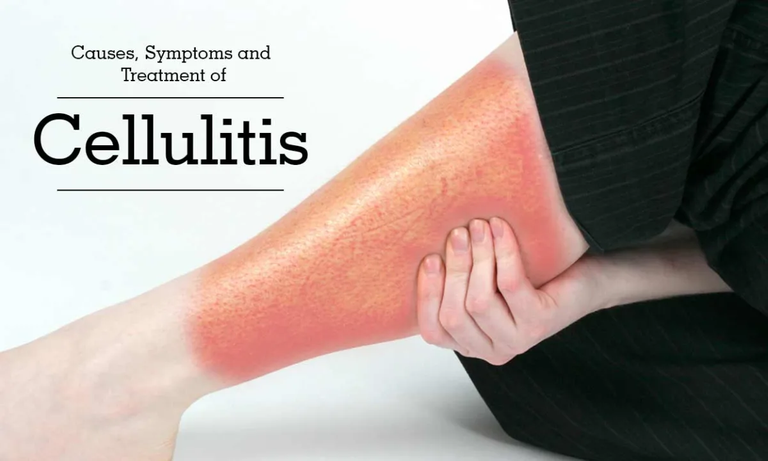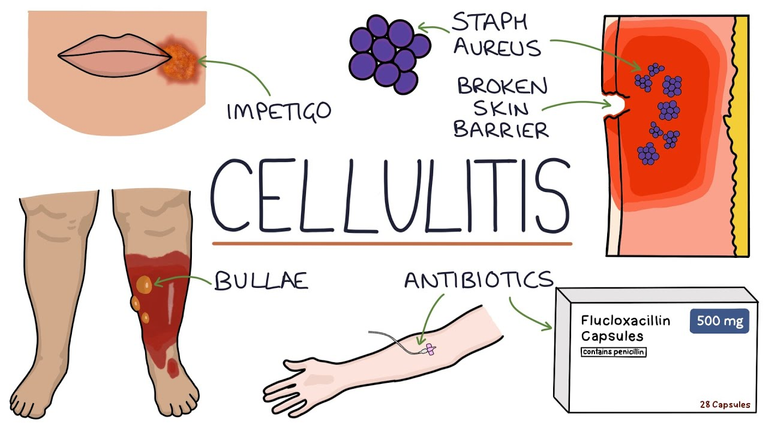Cellulitis: Causes, Symptoms, Prevention, and Treatment
Cellulitis is a potentially dangerous infection of the skin that people don't need to overlook rather than to seek medical attention if noticed Do you know the causes, symptoms, and treatment for cellulitis? Just continue reading to understand better.
What Is Cellulitis?
Cellulitis is commonly regarded as a bacterial infection that affects the skin. It can cause a range of symptoms, from redness and swelling to fever and chills. Left untreated, cellulitis can lead to more serious health problems.
If you think you may have cellulitis, it's important to seek medical attention. Treatment typically involves antibiotics, and early diagnosis and treatment will be very vital before it could gets worse.
What Are the Causes of Cellulitis?
There are a few different things that can cause cellulitis and I'll like you to look at them carefully. some of which are more common than others.
Bacteria: This is the most common cause of cellulitis, and it can be caused by a variety of different bacteria but the most likely to cause cellulitis is Staphylococcus aureus.
Injury: An injury, such as a cut, scrape, or burn, can provide a path for bacteria to enter the skin and cause cellulitis.
Skin Conditions: Certain skin conditions, such as eczema or psoriasis, can make the skin more vulnerable to infection and increase the risk of developing cellulitis.
Impaired Immune System: People with impaired immune systems are at an increased risk for developing cellulitis, as they are less able to fight off infection.
Signs and Symptoms of Cellulitis
Cellulitis is a very dangerous back infection capable of affecting the skin. It can cause the skin to become red, swollen, and hot to the touch. In severe cases, it can lead to fever, chills, and even sepsis.
If you notice any of the symptoms I mentioned above, it's important to see a doctor immediately for tests and treatment. untreated cellulitis can lead to serious complications, including limb amputation.
The Different Types of Cellulitis
When it comes to cellulitis, there are two types: facial cellulitis and non-facial cellulitis. Facial cellulitis is usually treated with antibiotics, while non-facial cellulitis is normally treated with intravenous antibiotics.
Facial cellulitis typically occurs on the face and affects the layers of skin closest to the surface. This type of infection can be caused by bacteria entering through a cut or broken skin. Symptoms include redness, tenderness, inflammation, and sometimes fever. It is important to seek medical treatment immediately if you suspect that you have facial cellulitis, as it can spread quickly if left untreated.
Non-facial cellulitis usually affects the deeper layers of skin and can occur anywhere on the body. It is typically caused by a bacterial infection in an area where it is already broken or damaged skin. The symptoms of non-facial cellulitis are similar to those of facial cellulitis and may include redness, swelling, warmth to the touch, and pain in the affected area. Non-facial infections must be treated as soon as possible in order to prevent further spread or complications.

How Is Cellulitis Treated?
Cellulitis is typically treated with antibiotics. Depending on the severity of your infection, your doctor may advise you to take oral antibiotics or get a prescription for intravenous antibiotics that will be administered in a hospital or clinic.
If your symptoms are mild, it is likely that you can take oral antibiotics at home. In more severe cases, your doctor may prescribe a combination of oral and intravenous antibiotics to clear the infection quickly; however, you may require a longer course of treatment.
It’s important to take the entire course of antibiotics prescribed by your doctor even if you start feeling better after just a few days. Not finishing your antibiotic treatment can result in the bacteria becoming resistant to it and can cause the infection to come back in the future.
It is also important to talk to your doctor about potential side effects associated with taking an antibiotic, as some can cause digestive issues and other side effects.

Prevention of Cellulitis
One of the best ways to prevent cellulitis from occurring is to keep your skin healthy. This means taking care of any cuts or scrapes that may occur and practicing good hygiene. Always make sure to wash any open wounds with soap and water and cover them with a bandage.
It is also important to keep your skin moisturized, as dry skin can cause cracks in the skin that can make it easier for bacteria to enter. And if you find yourself in an area where you could be exposed to certain bacteria, wear long pants, long sleeves, and shoes or boots. This will help protect you from possible infection.
Finally, if you are prescribed antibiotics either orally or intravenously for a wound or medical procedure, it's important to take all the medication as directed by your doctor. Doing this will ensure that all bacteria are killed and your risk of developing cellulitis goes down significantly.
Conclusion
If you're worried that you might have cellulitis, it's important to see a doctor immediately. They will be able to give you a proper diagnosis and start you on the right treatment plan.
Cellulitis can be a serious condition, but it's usually treatable with antibiotics. In most cases, people make a full recovery and don't have any long-term problems.
However, cellulitis can come back, so it's important to be aware of the risk factors and to see a doctor if you develop any symptoms.
Sources:
https://www.mayoclinic.org/diseases-conditions/cellulitis/symptoms-causes/syc-20370762



This is the first time I am hearing about cellulitis, from this it sounds like a great deal. Thanks for sharing with us.
The infection looks common but can be deadly if left untreated.
Thanks for your contribution to the STEMsocial community. Feel free to join us on discord to get to know the rest of us!
Please consider delegating to the @stemsocial account (85% of the curation rewards are returned).
You may also include @stemsocial as a beneficiary of the rewards of this post to get a stronger support.
You are right! we need to take better of cuts and other skin problems

!1UP
You have received a 1UP from @gwajnberg!
@stem-curator
And they will bring !PIZZA 🍕.
Learn more about our delegation service to earn daily rewards. Join the Cartel on Discord.
I gifted $PIZZA slices here:
@curation-cartel(9/20) tipped @apunawu (x1)
Please vote for pizza.witness!
I have learn something great from this post. So, there are 2 different types of cellulite. Facial cellulite and non-facial cellulite. Am grateful for this content. But, can you educate me on spider veins? Pls